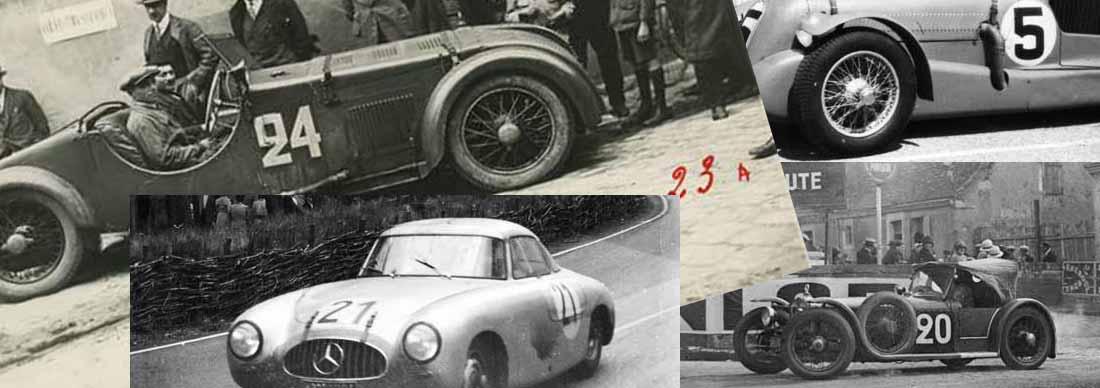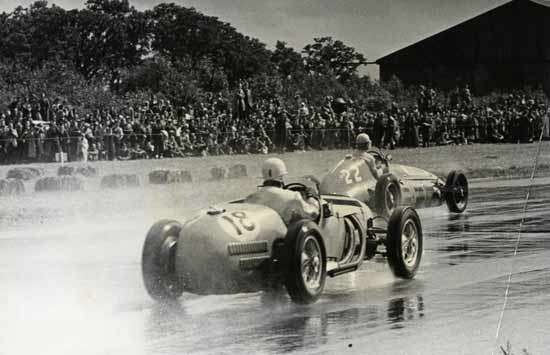
Première Night - part 1, by Serge Vanbockryck
For the first time in some years, the 2020 Le Mans 24-Hours will again feature a ‘Garage 56’ entry featuring ‘innovative technology’. But the routes nationales of La Sarthe have always been a non-stop automotive proving ground for over 90 years.
Almost a century ago, in 1923, Le Mans had been conceived first and foremost as a 24-hour challenge for automobile manufacturers to showcase their products and put them to the ultimate test. Eighty-eight editions later, this is still very much the case, and in that respect Nissan’s much-publicised campaign from five years ago, though ultimately disastrous, was spot-on: front-engined, front-wheel-drive cars were what they sold most of; hybrid power was the future. Though never in combination with each other, all three of the features which made the Nissan GT-R LM Nismo unique had already been tried and tested many times before, west of Paris.
Indeed, all pre-war and many post-war vehicles were front-engined, as some of the GT contenders still are today. The first front-wheel-drive car to enter Le Mans, however, was Jean-Albert Grégoire’s Tracta in 1927. With its 1100ccm, 4-cylinder engine made by the Société de Construction Automobile Parisiènne, or SCAP, Grégoire and Lucien Lemesle finished a competitive seventh overall, 40 laps down on the winning Bentley.

Above: The four-cylinder, 1099ccm Tracta-SCAP was the first front-wheel-drive car entered for Le Mans, in 1927. In the hands of Jean-Albert Grégoire and Lucien Lemesle it finished in seventh overall.
Superchargers and cinéma
Two years later, Pierre Fenaille – Grégoire’s business partner at Tracta – entered four cars, this time equipped with 1.0-litre engines with Cozette superchargers, the first time blown engines were to be run at Le Mans. The Tractas were not the only ones to look for complementary horses in 1929. So, too, did the American Stutz company – which supercharged the big 8-cylinder, 5.3-litre engine of their Stutz DV32 – and the English Alvis Car and Engineering Company, added a supercharger to the 1.5-litre engine of their Alvis 12/75. Guy Boriat and Philippe de Rothschild brought their Stutz home in fifth overall behind four Bentleys, while the first Tracta finished in ninth and the sole Alvis retired. The first supercharged Le Mans victory was penciled in the books just two years later when Lord Howe and Sir Henry Birkin beat a similarly-equipped Mercedes-Benz SSK in their privately-run Alfa Romeo 8C 2300 Tipo Le Mans.

Above: In 1929, the British Alvis 12/75 was one of the first cars to run a supercharger for extra horses. That year the French Tractas and the American Stutz also debuted this technology.

Above: This Tracta Spéciale was driven by Roger Bourcier and Tribaudot in 1929, the first year superchargers were employed.
The rest of the pre-war period saw few technical innovations as far as the cars went, though a number of ‘firsts’ are notable. In 1930, the ACO allowed private entrants in for the first time. The seven 24-hour races run so far had all consisted exclusively of works teams, of which in those days there were many as each country had at least a few dozen active automobile manufacturers. And in 1934, when Steve McQueen was just a four-year-old toddler, le cinéma discovered Le Mans and cameras flocked to the Circuit Permanent de la Sarthe and its environments to shoot “200 à l’heure” – or 200kph – a movie centred on the race.
US Army diesel power
Following a 10-year break because of the Second World War and its aftermath, the 24-Hours was run again in 1949. The pit facilities and grandstands, which had suffered from the bombing of the airfield next door, had been rebuilt and the ACO, in an attempt to attract as many teams as possible, had done away with a minimum production quota for the cars, thus opening up the race for non-production cars, or prototypes, for the first time. Despite the fact that economically Europe was still very much in ruins and supplies were short, the race still attracted 49 cars. Some were brand-new - like the winning Ferrari 149 MM - some were adapted pre-war concoctions showing the creativity of the entrants.
Two people making the best of what was around were the Delettrez brothers, Jean and Jacques. They used a pre-war Unic chassis in combination with Delahaye 145 bodywork of the same vintage and had power provided by a 4.4-litre, straight-six, 91bhp diesel engine from a US army GMC truck, the first time a diesel raced atLe Mans. The car’s lack of power and speed the Delettrez brothers hoped to compensate for with fabulous fuel economy, but they unfortunately had to retire after some 20 hours of racing… when they ran out of fuel. The Delettrez brothers’ effort probably went unnoticed to most, but 57 years later, diesels would reign supreme at Le Mans.

Above: The Delettrez brothers created this ‘parts bin special’ in 1949 and unknowingly made history. The pre-WW2 Unic chassis and Delahaye 145 bodywork were mated with a 6-cylinder diesel engine from a US Army GMC truck.
That same year another concept – and make – made its debut when a local miller by the name of Camille Hardy entered his personal Renault 4CV, the French version of the German Volkswagen concept. Renault tried hard to prevent the entry, arguing the Le Mans 24-Hours was too grueling an exercise for the tiny sedan with its signature suicide doors, rear-wheel-drive and small 747ccm, 4-cylinder, air-cooled engine mounted at the rear, but to no avail.
Despite running a 4-speed gearbox instead of the standard 3-speed version, the little Renault blew its engine after seven hours of racing. Inspired by Hardy though, Renault would soon enter works cars and eventually win the race in 1978 with a full-on Group 6 prototype.
However, another manufacturer would soon make the rear-engined concept its trademark: in 1951, a small family-owned German make by the name of Porsche entered the race, the first German entrant since the end of hostilities. Like the Renault 4CV, their nimble 1.1-litre Type 365 coupe was also based on the Volkswagen concept which the company had developed 15 years earlier. The small sports car won its class first time out and over the following seven decades Porsche would master the rear engine concept to perfection and score another 45 Le Mans class wins, crowned by an overall victory in 1979, being the only win ever for a rear-engined car.
The year Porsche made its debut, the race was won by the Jaguar XK 120C – or C-type as they became known – driven by Peter Walker and Peter Whitehead. Jaguar boss William Lyons had been buoyed by the performance of a trio of near-standard XK 120 roadsters entered in 1950 and was persuaded by his colleagues Bill Heynes and ‘Lofty’ England that they could seriously improve their performance if the XK 120 was turned into a proper race car.
Thus the 1951 C-types featured a more powerful engine, a streamlined body made of aluminium and, for the first time, a steel spaceframe chassis, which was stiffer than a conventional chassis. The spaceframe concept had already been looked into by aeronautical designers at the turn of the century, and later by architects, too, but it was Ferdinand Porsche who had first used it in racing when he designed the Cisitalia F1 car for an Italian customer in 1947. The car never raced, however, so it was left to Jaguar to prove the theory four years later. Jaguar’s strategy worked to perfection and the two Peters beat a pair of Aston Martins and a couple of Talbot-Lagos by between nine and 11 laps.
The following year, Mercedes-Benz entered the soon-to-be-legendary gullwing 300SL with sleek aluminium bodywork and a lightweight aluminium space frame, and promptly won, at the same time scoring the first win for a closed cockpit car. Space frame chassis more-or-less became the norm for sports-prototypes until the mass arrival of the monocoque with the advent of Group C in 1982, scoring 19 overall wins in those 30 years.

Above: In 1952 the Mercedes 300SL was the first closed-cockpit car to win Le Mans.
Première Night - part 2, by Serge Vanbockryck
Première Night - part 3, by Serge Vanbockryck
Books by Serge Vanbockryck






Leave a comment
This site is protected by hCaptcha and the hCaptcha Privacy Policy and Terms of Service apply.